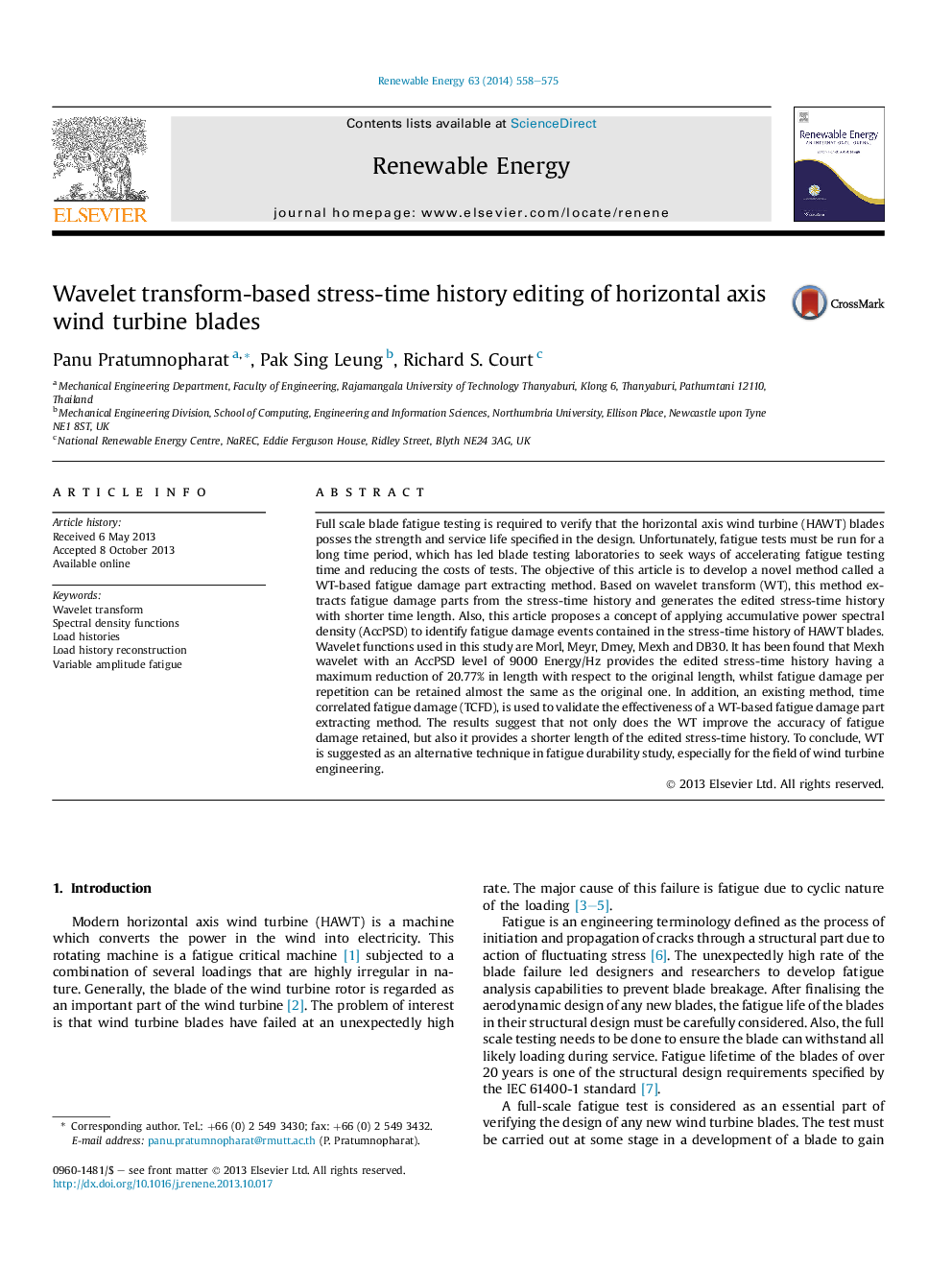| Article ID | Journal | Published Year | Pages | File Type |
|---|---|---|---|---|
| 6769041 | Renewable Energy | 2014 | 18 Pages |
Abstract
Full scale blade fatigue testing is required to verify that the horizontal axis wind turbine (HAWT) blades posses the strength and service life specified in the design. Unfortunately, fatigue tests must be run for a long time period, which has led blade testing laboratories to seek ways of accelerating fatigue testing time and reducing the costs of tests. The objective of this article is to develop a novel method called a WT-based fatigue damage part extracting method. Based on wavelet transform (WT), this method extracts fatigue damage parts from the stress-time history and generates the edited stress-time history with shorter time length. Also, this article proposes a concept of applying accumulative power spectral density (AccPSD) to identify fatigue damage events contained in the stress-time history of HAWT blades. Wavelet functions used in this study are Morl, Meyr, Dmey, Mexh and DB30. It has been found that Mexh wavelet with an AccPSD level of 9000Â Energy/Hz provides the edited stress-time history having a maximum reduction of 20.77% in length with respect to the original length, whilst fatigue damage per repetition can be retained almost the same as the original one. In addition, an existing method, time correlated fatigue damage (TCFD), is used to validate the effectiveness of a WT-based fatigue damage part extracting method. The results suggest that not only does the WT improve the accuracy of fatigue damage retained, but also it provides a shorter length of the edited stress-time history. To conclude, WT is suggested as an alternative technique in fatigue durability study, especially for the field of wind turbine engineering.
Related Topics
Physical Sciences and Engineering
Energy
Renewable Energy, Sustainability and the Environment
Authors
Panu Pratumnopharat, Pak Sing Leung, Richard S. Court,
